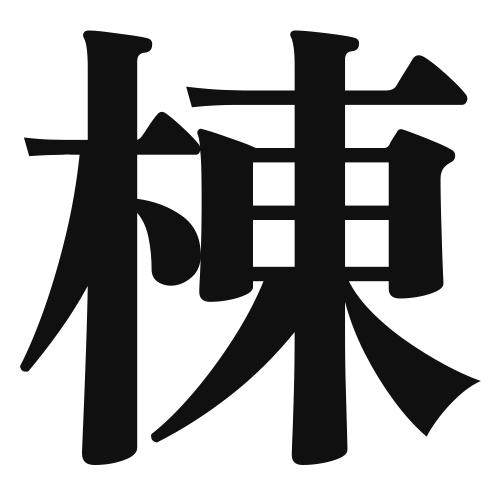1. Overview of Meaning
The kanji “棟” (pronounced “mune” or “tou”) primarily means “roof” or “building.” It refers to the structural part of a building that supports the roof, often indicating the main part of a house or a significant structure.
2. Formation and Radical
Formation of the Kanji: The kanji “棟” is a compound character (会意文字) that combines the elements of “木” (tree) and “冂” (a cover or roof). This reflects the idea of a structure made from wood that supports a roof.
Radical: The radical of “棟” is “木,” which means “tree” or “wood,” indicating its connection to wooden structures.
3. Examples of Usage
Common Words and Phrases: Some frequently used words that include “棟” are:
- 棟上げ (むねあげ, muneage) – the raising of the roof or the completion of the roof structure.
- 棟札 (むねふだ, mune-fuda) – a plaque or signboard placed on the roof of a building.
Example Sentences in Daily Conversation:
- この家の棟はとても高いです。 (Kono ie no mune wa totemo takai desu.) – The roof of this house is very high.
- 新しい棟が建設中です。 (Atarashii tou ga kensetsu-chuu desu.) – A new building is under construction.
4. Synonyms and Antonyms
Similar Kanji: A similar kanji is “屋” (や, ya), which means “house” or “roof.” While “棟” refers specifically to the structural aspect of a building, “屋” can refer to the entire building or dwelling.
Antonyms: An antonym could be “地” (ち, chi), meaning “ground” or “earth,” as it represents the opposite of a structure that is elevated or built above the ground.
5. Cultural and Historical Background
Connection to Japanese Culture: In traditional Japanese architecture, the “棟” plays a crucial role in the design and aesthetics of buildings, especially in temples and shrines, where the roof structure is often elaborately designed.
Proverbs and Idioms: One common saying is “棟に上がる” (むねにあがる, mune ni agaru), which means to rise to a higher position or status, reflecting the significance of the roof as a symbol of elevation and achievement.
